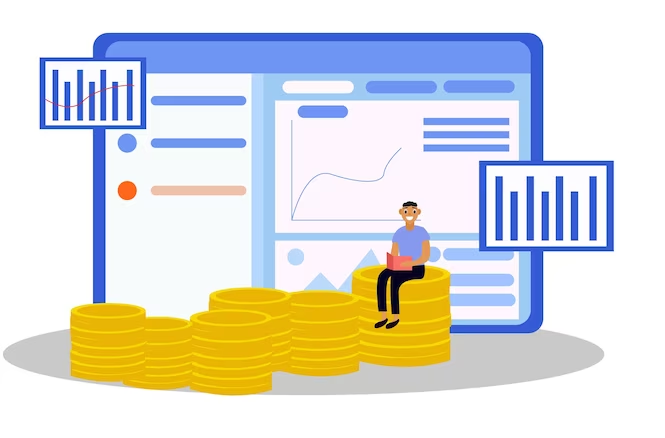
In an era where data reigns supreme, businesses increasingly recognize the value of their data assets. Data monetization, the practice of generating revenue from data, has become a strategic imperative. To embark on this journey, organizations require robust data monetization tools. This comprehensive guide explores the world of data monetization and its significance and unveils the top 8 data monetization tools. Whether you are a data analyst, business owner, or data enthusiast, this guide will assist you in choosing the right tool to capitalize on your data.
What Is Data Monetization?
Data monetization is the process of converting data into revenue streams. It involves various strategies, such as selling data, offering data-related services, or leveraging data for targeted advertising. By monetizing data, businesses can recoup their data investments and generate substantial profits.
Why is Data Monetization Important?
Data monetization is crucial for several reasons:
- Revenue Generation: It provides new revenue streams, diversifying a company’s income sources.
- Competitive Advantage: It allows businesses to stay ahead by leveraging their data to make informed decisions.
- Unlocking Hidden Value: Data monetization helps extract value from unused or underutilized data assets.
- Customer Insights: It enables businesses to understand their customers better and deliver more personalized experiences.
Now that we’ve established the importance of data monetization let’s delve into the tools that can facilitate this process.
What Are Data Monetization Tools?
Data monetization tools are software solutions designed to help organizations extract, manage, and profit from their data. These tools are crucial in turning raw data into actionable insights and revenue. Below, we introduce you to the top 8 data monetization tools.
8 Best Data Monetization Tools in 2023
- #1 DataRobot
- #2 Snowflake
- #3 Databricks
- #4 Talend
- #5 IBM InfoSphere
- #6 StreamSets
- #7 Alteryx
- #8 Google Cloud Dataprep
Data Monetization Tools #1. DataRobot
DataRobot is an AI-powered data monetization tool that enables organizations to build, deploy, and manage machine learning models. It automates the data preparation process and offers advanced analytics for data-driven decision-making.
Features:
- Automated machine learning (AutoML)
- Model deployment and management
- Model explainability and interpretation
Pros:
- Accelerates model development
- Provides actionable insights
- Simplifies machine learning for non-experts
Cons:
- It can be expensive for smaller businesses.
- Requires adequate data preparation
Data Monetization Tools #2. Snowflake
Snowflake is a cloud-based data warehousing platform that simplifies data storage, processing, and sharing. It empowers organizations to monetize their data by securely sharing it with external parties while maintaining control.
Features:
- Cloud-native architecture
- Scalable data sharing
- Data security and governance
Pros:
- Scalable and cost-effective
- Enables secure data sharing
- Supports diverse data types
Cons:
- May require a learning curve for beginners
- Costs can escalate with high data usage
Data Monetization Tools #3. Databricks
Databricks is a unified analytics platform that combines data engineering, machine learning, and collaborative capabilities. It assists organizations in monetizing data by enabling data processing and analysis at scale.
Features:
- Unified analytics environment
- Apache Spark integration
- Collaborative workspace
Pros:
- Simplifies big data processing
- Supports collaborative work
- Integrates with popular data sources
Cons:
- Pricing can be high for extensive usage
- Requires some technical expertise
Data Monetization Tools #4. Talend
Talend is an open-source data integration platform that helps organizations collect, transform, and share data. It facilitates data monetization by ensuring data quality and integrity.
Features:
- Data integration and transformation
- Data quality and governance
- Integration with cloud platforms
Pros:
- Open-source and cost-effective
- Comprehensive data integration capabilities
- Strong data governance features
Cons:
- It may require technical knowledge for complex tasks.
- Some advanced features are available in premium versions
Data Monetization Tools #5. IBM InfoSphere
IBM InfoSphere is a data integration and governance solution that empowers organizations to monetize their data assets by ensuring data accuracy, security, and compliance.
Features:
- Data integration and transformation
- Data quality and governance
- Master data management
Pros:
- Comprehensive data governance
- Scalable and suitable for enterprises
- Integration with IBM’s broader data ecosystem
Cons:
- Pricing can be high for smaller businesses
- Implementation may require significant resources
Data Monetization Tools #6. StreamSets
StreamSets is a data operations platform that simplifies data movement and transformation. It assists organizations in monetizing data by ensuring efficient and reliable data pipelines.
Features:
- Data pipeline design and management
- Real-time data processing
- Data drift detection
Pros:
- Simplifies data pipeline development
- Supports real-time data processing
- Provides data drift detection
Cons:
- It may not be suitable for very complex data integration scenarios.
- Some features require technical expertise
Data Monetization Tools #7. Alteryx
Alteryx is a data analytics and preparation platform that helps organizations prepare and analyze data for monetization. It offers a user-friendly interface for data blending, cleansing, and analysis.
Features:
- Data blending and preparation
- Advanced analytics and predictive modeling
- Integration with various data sources
Pros:
- User-friendly for data preparation
- Enables advanced analytics without coding
- Supports integration with popular data sources
Cons:
- Pricing can be high for small businesses
- Advanced analytics may require additional training
Data Monetization Tools #8. Google Cloud Dataprep
Google Cloud Dataprep is a cloud-based data preparation tool that facilitates data cleansing and transformation for monetization. It offers a visual interface for data-wrangling tasks.
Features:
- Data cleansing and transformation
- Integration with Google Cloud services
- Visual data preparation
Pros:
- Cloud-based and scalable
- Simplifies data preparation tasks
- Integrates with the Google Cloud ecosystem
Cons:
- It may be more beneficial for organizations using Google Cloud
- Limited to cloud-based data sources
How Do You Choose the Best Data Monetization Tool?
Selecting the right data monetization tool is crucial for success. Consider the following factors when making your decision:
- Data Compatibility: Ensure the tool can handle your data sources and formats.
- Scalability: Choose a tool that can grow with your data monetization needs.
- Ease of Use: Opt for a tool that aligns with your team’s skills and expertise.
- Cost-effectiveness: Evaluate pricing models and choose a tool that fits your budget.
- Integration: Ensure the tool can seamlessly integrate with your existing tech stack.
Pros and Cons of Data Monetization Tools
Before concluding our exploration of data monetization tools, let’s summarize their pros and cons:
Pros:
- Revenue Generation: Data monetization tools enable businesses to generate new revenue streams.
- Data Optimization: They help improve data quality and consistency.
- Competitive Advantage: Leveraging data for insights can provide a competitive edge.
- Efficiency: Automation and analytics capabilities save time and effort.
Cons:
- Cost: Some tools can be expensive, particularly for small businesses.
- Complexity: Advanced features may require a learning curve or technical expertise.
- Data Security: Sharing data externally may raise security concerns.
- Integration Challenges: Ensuring seamless integration with existing systems can be challenging.
Conclusion
In conclusion, data monetization tools play a pivotal role in unlocking the value of your data assets. Whether you aim to optimize operations, increase revenue, or gain a competitive advantage, the right tool can make all the difference. By considering your specific needs and evaluating the tools we’ve discussed, you can embark on a successful data monetization journey, leveraging your data to achieve your business goals in a data-driven world.



